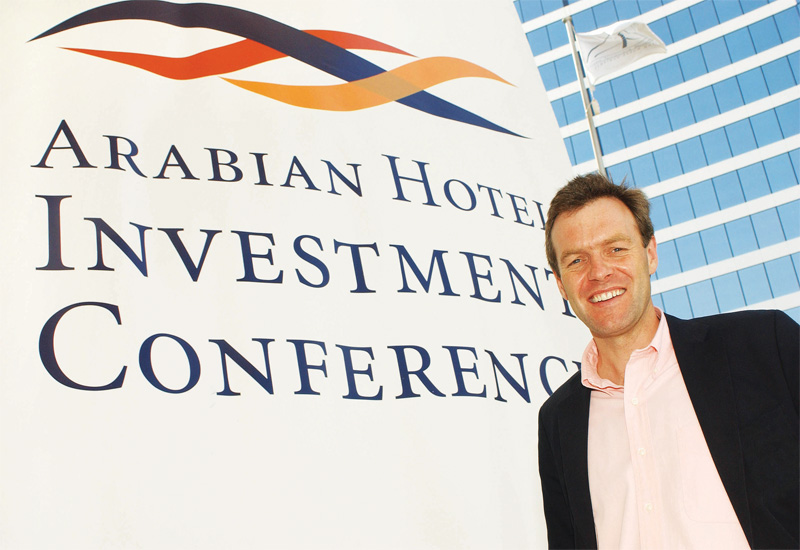Heading for hindsight
Segments aside, CEO of Shaza Hotels Simon Coombs, who will speak at AHIC on a panel entitled ‘The Next Wave’ focused on new types of boutique hotels, says the industry needs to use the benefit of hindsight in order to sustain and hopefully propel growth.
“Major economic shocks to global and regional economies, such as the financial crisis that commenced in 2008, should encourage us to reflect and to take positive actions going forward,” says Coombs.
“Experiences from the past decade indicate that there must be a strong focus by both the public and private sectors in the coordination of present and future demand stimulation in order to sustain supply booms that we are now seeing in many markets.

| Advertisement |
“Historically, hotel development has been driven by the private sector with a micro investment view. However, I believe that this has changed and from a macroeconomic perspective we have seen the major impact of counter-cyclical measures taken by governments to push through initiatives, even during times of downturn.”
At Wyndham Hotel Group, returning speaker Bani Haddad, regional vice president MEA, also ranks the level of investments from government as a significant change.
“The increasing direct investment from government entities of sovereign wealth funds in the hospitality industry has played a major role in shaping the hospitality landscape in the region. Many of these investments were mega projects which actually helped position the country or the city they were developed in and consequently attracted demand and additional investment in the industry,” says Haddad.
Meanwhile, Golden Tulip MENA president Amine Moukarzel notes that PPPs play a significant role. “The hospitality industry is seeing tremendous impact related to technology and to its sustainability. The partnership with the private and public sectors has a significant role to enhance the hospitality deliverables, whether on the legislative aspect, classification ratings, or on establishing the standards for better improvement and better deliveries year on year.”
Jumeirah Group CEO Nicholas Clayton says that these days, developers themselves are “exercising more discipline around projects”.
“Fewer hotel developments are being built for a “single use” and more are being developed with a longer term plan to sustain cash flows and quality,” says Clayton.
In addition, both Hala Matar Choufany at HVS and Filippo Sona, director, head of hotels, MENA region, Colliers International, predicted a move towards franchising becoming more common as an alternative to pure management contracts.
“Lastly but not least, the market will witness rising popularity of franchising, although this will be primarily the business model of well-established owning groups — the likes of MAF,” predicts Sona.
Bringing the construction perspective, Tom Hasker, UAE country director & head of project management ME, Faithful+Gould, says that as the industry looks to the next 10 years, “the other significant change is the requirement for properties built within the past 10 years to undergo refurbishment works in order to compete with new properties and maintain the luxury standard of Dubai.
“The requirement for significantly higher than usual maintenance budgets to overcome poor quality base building design and construction has resulted in developers recognising the importance of quality over cost when developing hotel projects,” adds Hasker.
TREND TALK
Aside from the geographic, segmentation and investment changes, speakers were keen to also highlight the consumer demands and travel trends that will be shaping the business.
At Shaza, Coombs predicts an increase in intra-regional travel and “localisation” of brands — which he asserts does not mean lower rates — and travelling families, also lucrative.
“I also believe that as an industry we can do more to properly cater for the expectations of travelling families. The Muslim tourism market spend, even excluding Umrah and Hajj, is estimated to reach US $181 billion by 2018 according to figures produced by Thomson Reuters,” reports Coombs.
At Katara Hospitality, which prides itself on choosing operating partners that understand a country’s “local spirit” while also appealing to international guests, COO Christopher Knable agrees that he expects to see more local concepts going forward.
“The Middle East in general and GCC markets in particular have been traditionally positioned within the luxury travel segment. We expect to see this bracket evolving further by developing local concepts that provide exquisite hospitality experiences that go beyond amenities and personalised service,” says Knable.
Boutique and lifestyle hotels will also be important, asserted Meliá’s Ostermann and Colliers Sona.
“In cities such as Dubai, the high degree of industry sophistication and high proportion of the GCC population characterised by generation Y will see more scope for boutique, lifestyle hotel concepts being developed,” he explained.
With this trend only just taking shape in projects in the region, with Mondrian Doha and ME by Meliá Dubai under development, along with the first W for Dubai finally expected in 2017, will boutique be the new budget in terms of talking points at AHIC for the next 10 years? Discussed at length, yet not quite off the drawing board?
For how many years will the UAE and KSA dominate the development pyramid? And who speaking at this year’s event will have the staying power to be there in 2024?
Only one thing is certain — as Worsley says, the window of opportunity will remain open; it’s up to the industry ensure it keeps stepping through it.






-AHIC-opening-even.jpg)



 Search our database of more than 2,700 industry companies
Search our database of more than 2,700 industry companies









